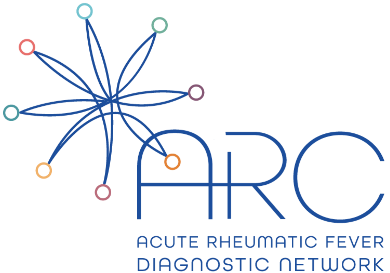Search
Research
Penicillin G concentrations required for prophylaxis against Group A Streptococcus infection evaluated using a hollow fibre model and mathematical modellingAcute rheumatic fever (ARF), an autoimmune reaction to Group A Streptococcus (Streptococcus pyogenes; Strep A) infection, can cause rheumatic heart disease (RHD). New formulations of long-acting penicillins are being developed for secondary prophylaxis of ARF and RHD.

Research
Acute Rheumatic Fever Diagnosis Collaborative Network (ARC)ARC is a global network of collaborators committed to reducing the burden of RHD in our lifetime.
Research
Trimodal skin health programme for childhood impetigo control in remote Western Australia (SToP): a cluster randomised, stepped-wedge trialSkin infections affect physical health and, through stigma, social-emotional health. When untreated, they can cause life-threatening conditions. We aimed to assess the effect of a holistic, co-designed, region-wide skin control programme on the prevalence of impetigo.
Research
Development of methods to rapidly track pathogen and antibiotic resistance profiles from skin sores in Northern Australia (Hot North)Indigenous Australian children suffer the highest rates of impetigo (skin sores) in the world, which can result in serious immune complications including chronic kidney and possibly rheumatic heart disease.
Research
What risk does underlying trimethoprim resistance pose for the development of cotrimoxazole-resistant skin infectionsInvestigating what risk does underlying trimethoprim resistance pose for the development of cotrimoxazole-resistant skin infections.
Research
Recombinational exchange of M-fibril and T-pilus genes generates extensive cell surface diversity in the global group A Streptococcus populationAmong genes present in all group A streptococci (GAS), those encoding M-fibril and T-pilus proteins display the highest levels of sequence diversity, giving rise to the two primary serological typing schemes historically used to define strain. A new genotyping scheme for the pilin adhesin and backbone genes is developed and, when combined with emm typing, provides an account of the global GAS strain population.
Research
Standardization of epidemiological surveillance of group A Streptococcal cellulitisCellulitis is an acute bacterial infection of the dermis and subcutaneous tissue usually found complicating a wound, ulcer, or dermatosis. This article provides guidelines for the surveillance of cellulitis.
Research
Genetic Manipulation of Group A Streptococcus-Gene Deletion by Allelic ReplacementAn optimized, rapid method for creating markerless isogenic mutations that combines Gibson assembly cloning with a new temperature-sensitive plasmid, pLZts
Research
A pilot study to develop assessment tools for Group A Streptococcus surveillance studiesGroup A Streptococcus (GAS) causes pharyngitis (sore throat) and impetigo (skin sores) GAS pharyngitis triggers rheumatic fever (RF) with epidemiological evidence supporting that GAS impetigo may also trigger RF in Australian Aboriginal children. Understanding the concurrent burden of these superficial GAS infections is critical to RF prevention. This pilot study aimed to trial tools for concurrent surveillance of sore throats and skins sore for contemporary studies of RF pathogenesis including development of a sore throat checklist for Aboriginal families and pharynx photography.
Research
In vitro antibacterial activity of Western Australian honeys, and manuka honey, against bacteria implicated in impetigoImpetigo is a contagious skin disease caused by Staphylococcus aureus and Streptococcus pyogenes. Without treatment, impetigo may be recurrent, develop into severe disease, or have serious, life-threatening sequelae. Standard treatment consists of topical or systemic antibiotic therapy (depending on severity), however, due to antibiotic resistance some therapies are increasingly ineffective.
